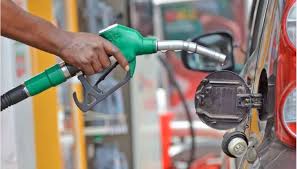Households in Kenya should brace for even tougher economic times in 2026 as the government plans to introduce new taxes on fuel and electricity to fund energy infrastructure.
The move is likely to see consumers slapped with additional levies, further pushing up the cost of goods and services.
Dubbed Consolidated Energy Fund (CEF), the kitty seeks to raise $18.7 billion in five years towards improving energy-related infrastructure, including dams, geothermal power stations and solar projects, even as the country seeks to add 5,000 megawatts to its power grid by 2030.
This means that the state will collect at least Sh478 billion from taxpayers every year until 2030, pushing up the cost of power and fuel.
According to Energy Cabinet Secretary Opiyo Wandayi, the fund will draw money from multiple sources, including appropriations from Parliament and contributions from energy sector players, which are likely to include new charges collected from consumers on fuel or electricity.
“The sources of the Fund shall be pursuant to Section 216(2) of the Energy Act and include appropriations from Parliament, contributions from energy sector players,” Wandayi said in the Energy and Petroleum Policy for 2025–29.
Kenyan consumers already pay several levies that support energy-related projects.
These include the Roads Maintenance Levy, charged at Sh25 per litre of petrol and diesel, and the Petroleum Development Levy (PDL), levied at Sh5.40 per litre of petrol and diesel and Sh0.40 per litre of kerosene.
In the electricity sector, the Rural Electrification Authority (REA) Levy, charged at five per cent of the cost of electricity units consumed, helps fund electrification initiatives in rural areas.
Generally, Kenya levies the highest taxes and levies on petroleum products per litre for the cycle spanning August 15 to September 14, 2025.
Super petrol in Kenya incurs a tax of Sh82.33 per litre, significantly higher than Tanzania’s 50.64, Uganda’s 52.30, and Rwanda’s 30.69.
Similarly, diesel taxes in Kenya stand at Sh69.67, while Tanzania, Uganda, and Rwanda impose 44.59, 40.76, and 36.79, respectively.
For kerosene, Kenya’s tax is Sh55.14, compared to Tanzania’s Sh37.26.
The cost of electricity in Kenya is also among the highest in the region, with approximately Sh28.72 per unit for residential use and Sh22.44 per unit for businesses. These prices include power, transmission, distribution, and taxes, but can vary based on consumption levels and are influenced by the fluctuating Fuel Cost Charge (FCC) and Foreign Exchange (Forex) adjustments.
Tax experts, economists and energy analysts who talked to the Business Standard have projected an additional Sh3 per litre of fuel and Sh1 for every unit of power if the country hopes to hit an annual target of Sh480 billion.
According to Jacob Luyegu, a tax policy expert based in the UK, an additional tax, however minimal, on fuel and electricity spells doom for any given economy.
“The cost of production is likely to go up by at least Sh5. Producers will not blink at passing the cost to consumers, already struggling to put food on the table. This is total madness,’’ he said.
Terry Musau, a retired energy engineer, wonders where Kenya is planning to take an additional 5,000 megawatts of power if consumers are already paying for idle power.
“Although Kenya has an ambitious plan to add more power to its grid, the reasoning in the Energy and Petroleum Policy for 2025–29 defies core principles of demand and supply,’’ Musau said.
“The manufacturing sector barely contributes less than 10 per cent to Kenya’s GDP. Why can’t the government push for more industries before advocating for more power? This is insane,’’ he said.
Kenya pays billions to Independent Power Producers (IPPs) for unused power every year, with the data from the energy regulator indicating that Kenya Power paid Sh151.7 billion to Kenya Electricity Generating Company PLC (KenGen) and other Independent Power Producers (IPPs) in the 2023/24 financial year.
Speaking when he appeared before the Senate Energy Committee, Wandayi explained that the amount covered payments to the Kenya Electricity Generating Company (KenGen) and various independent power producers (IPPs) for power consumed, as well as idle capacity that was not dispatched during the year.
“The methodology for paying the public and independent power producers ensures that where a plant is not dispatched due to reduced demand, the generators can meet their capital recovery obligations and fixed operations and maintenance costs to ensure that the plant is available for dispatch at any given time when demand arises,” Wandayi said.
Among the highest-paid IPPs between July 2022 and June 2024 were: Triumph Power at Sh6.2 billion ($48.2 million), Rabai Power at Sh6.1 billion ($47.7 million), Thika Power at Sh4.8 billion ($37.3 million), Gulf Power at Sh4.4 billion ($34.1 million) and (EA) Power at Sh4.21 billion ($32.6 million).
by VICTOR AMADALA


